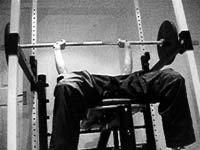 In keeping with the rack-pull focus of the current deadlift program, I decided to add a few lockouts to my bench work. The idea is to slide these in after a bit of heavy flat bench pressing, although today's workout was solely designed to get an idea of my current max.
In keeping with the rack-pull focus of the current deadlift program, I decided to add a few lockouts to my bench work. The idea is to slide these in after a bit of heavy flat bench pressing, although today's workout was solely designed to get an idea of my current max.
The pins were set right beneath the j-hooks, which gives around 25cm range of motion. This proved to be larger than I thought, and I soon found myself getting stapled under 100kg.
Rack lockout (25cm ROM) 20@20kg, 10@40kg, 10@60kg, 5@70kg, 5@80kg, 3@90kg, 0@100kg
I followed the pressing with a brief upper back workout, which comprised a few supersets of chin-ups and band pull-aparts. The basic mini-band (35lb of resistance) proved quite enough for these; at least when immediately following the chins. The fact that there was only around 10sec rest between sets didn't help.
Chin-up/band pull-apart (mini band #1) - supersetted 12/20, 7/20, 5/20
Finished with a few sets of band tricep pushdowns, which - as I suspected - are a great way to end things.
2×20 (blue band)
20 (green band)
10 (green band, each hand separately)
NB : a list of each band and the resistance given is here.
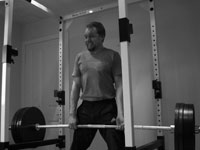 As per the
As per the 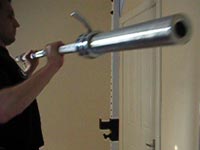 I'm a little unsure of the origins of the Neider Press, however the first person that springs to mind is strong-shouldered Bill Neider, who won the gold medal for the Shot Put at the 1960 Olympics in Rome. As I'm a little reluctant to start throwing heavy objects around the room, the Neider Press seems like a perfect alternative.
I'm a little unsure of the origins of the Neider Press, however the first person that springs to mind is strong-shouldered Bill Neider, who won the gold medal for the Shot Put at the 1960 Olympics in Rome. As I'm a little reluctant to start throwing heavy objects around the room, the Neider Press seems like a perfect alternative.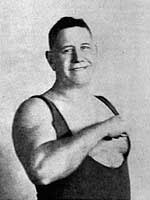 George Zottman (pictured at left) was a Philadelphia strongman in the 1880s/1890s. In this photo Zottman, aged 57, still had massive forearms by any standard - measuring 16 1/2 " here. Relaxed they were still a suitably impressive 14 1/2 ".
George Zottman (pictured at left) was a Philadelphia strongman in the 1880s/1890s. In this photo Zottman, aged 57, still had massive forearms by any standard - measuring 16 1/2 " here. Relaxed they were still a suitably impressive 14 1/2 ".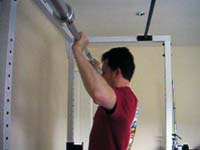 The Bradford Press is named for former US Heavyweight lifter
The Bradford Press is named for former US Heavyweight lifter 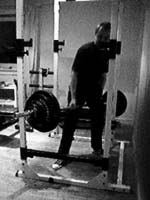 UPDATE : This lift owes its origin to Strongman Charles Jefferson, not Thomas. Thanks
UPDATE : This lift owes its origin to Strongman Charles Jefferson, not Thomas. Thanks 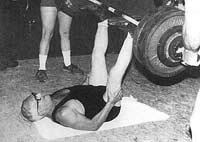
 Ed Zercher was a St Louis Strongman (pictured here performing an unsupported leg press), who famously trained using equipment looking more at home in a junkyard than a gym. His basement was filled with pieces of old machinery, anvils, wrecking balls and assorted odd-shaped heavy objects. Clearly strength was a passion.
Ed Zercher was a St Louis Strongman (pictured here performing an unsupported leg press), who famously trained using equipment looking more at home in a junkyard than a gym. His basement was filled with pieces of old machinery, anvils, wrecking balls and assorted odd-shaped heavy objects. Clearly strength was a passion.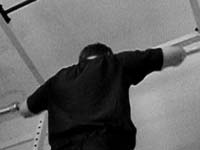 Following the many sets/low reps mentality of my
Following the many sets/low reps mentality of my 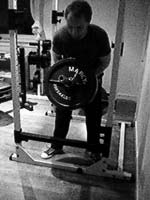 Today marked the start of a deadlift-centric cycle which will hopefully see the deadlift numbers climbing once again. The
Today marked the start of a deadlift-centric cycle which will hopefully see the deadlift numbers climbing once again. The 